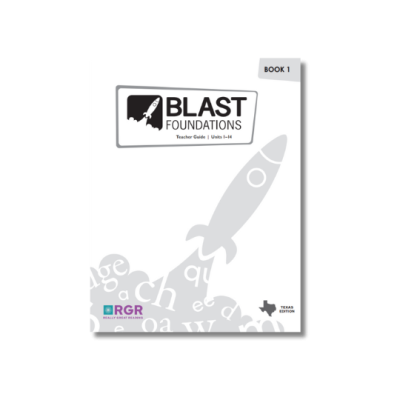Evaluation for 2.1a
Materials include a variety of instructional assessments at the unit and lesson level (including diagnostic, formative, and summative) that vary in types of tasks and questions.
In grade 1, materials include a variety of instructional assessments. Grade 1 materials provide "Diagnostic Decoding Surveys" in which teachers can use the "Diagnostic Decoding Surveys" to help determine which students are struggling with decoding, and more specifically, what types of words those students are struggling with. The words in the Grade 1, Diagnostic, are identical to those found in Really Grade Reading (RGR)'s Grade 1, Foundational Skills Survey (FSS1). The words in the diagnostics are representative of first grade foundational literacy skills (those found in the Blast curriculum) that focus on: simple and complex single-syllable words, decodable two-syllable words, and select sight words. The materials provide the teacher with information on how to administer the survey and how to use the data received from the survey. Grade 1 materials provide opportunities for formative assessment. At the lesson level, the formative and summative assessments vary in types of questions and tasks. In "Appendix A" in the Blast Teacher Guide, Book 2, the procedure for an activity called Read A Row is explained. The guidance states the activity, "The objective of Read a Row in Lessons 1 and 5 in each unit (beginning in Unit 4) is to allow you to measure how well individual students grasped (in Lesson 1) and have mastered (in Lesson 5) the letter-sound relationships and Heart Words that were taught and practiced." At the unit level, the diagnostic and summative assessments vary in types of questions and tasks. Three Reading Playground games from each unit can be utilized as formative assessments. In the Blast Supply Room under Reading Playground, Formative Assessment, and the Blast Formative Assessment Guide, it states, "Each game assesses a unique skill taught within the current unit. The concepts targeted in the assessment games are phonemic awareness, phonics, letter identification, letter-sound correspondence, decoding, and encoding, under the Game Choice Rationale, showing the variety used. Also under the "Reading Playground" tab in "Diagnostics," the Blast Oral Decoding Diagnostic Survey shows variation by assessing students through their word-reading skills. A video is included to guide the teacher on how to assign the assessments. A chart is also included to guide the teacher with next steps and instructional recommendations. In grade 1, Blast Online provides Beginning, Middle, and End of Program Summative Assessments in the "Reading Playground." Section 2, "Blast Reading Playground's Recommended Timeline," of a document titled "Program Assessments in the Blast Reading Playground" uses a timeline to visually represent when summative assessments should be administered throughout the school year. The assessments are intended to be used at the beginning, middle, and end of the year. The assessments can be administered in the form of games by creating an assignment, and can be completed whole class or in reading rotations. The "Reading Playground" also contains a "Diagnostics" tab with a document titled "First Grade Diagnostic Decoding Surveys." Section 2, "Blast Reading Playground's Diagnostic Timelines," of the document uses a timeline to visually represent when assessments should be administered throughout the school year. The teacher can also choose to use Oral Decoding in two ways: 1:1 with each student, or using voice recording tied to an assignment. In grade 1, Blast Teacher Guide, Book 1, "Cumulative and Controlled Practice as Formative Assessment" explains "the last two lessons of every Blast unit provide practice activities and a wrap-up where students show what they know as they synthesize newly taught information with previously taught concepts." For example, Unit 1, Lesson 5, students review alphabet, consonant letter names and phonemes, short vowel phonemes and motions, and long vowel phonemes and motions which were taught previously in the unit. In grade 1, Blast Teacher Guide, Book 1, "Quick Check" section states,



